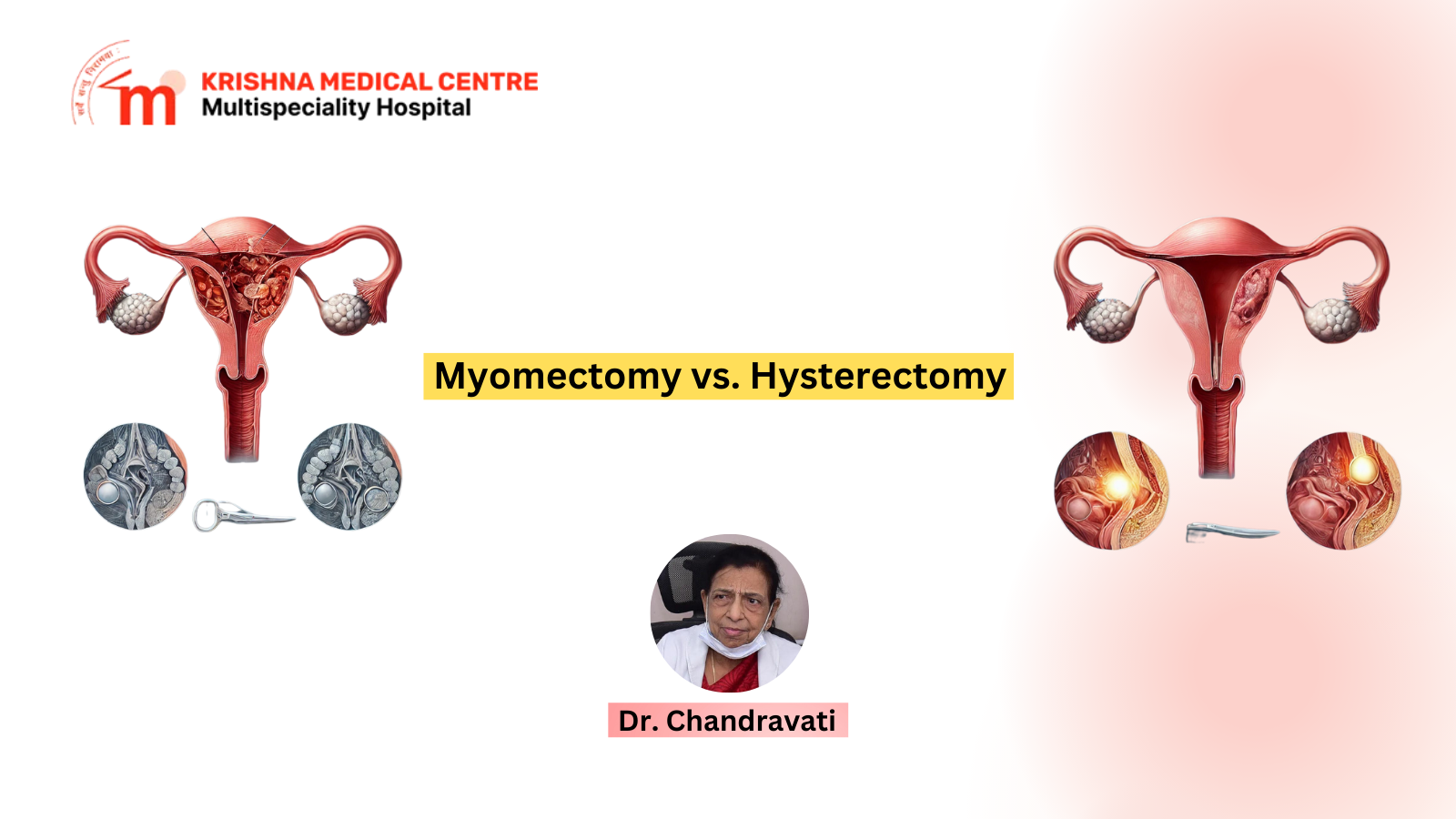

Beware of frauds: Online appointments are available only after confirmation with the hospital for any of our consultant doctors.


Did you know that nearly 70% of women will develop uterine fibroids by the age of 50? When it comes to uterine fibroid treatment, choosing the right surgery is crucial. Two common options include myomectomy and hysterectomy. Myomectomy offers fertility-preserving surgery by removing only the fibroids, while hysterectomy addresses symptoms through the complete removal of the uterus, which involves a careful hysterectomy recovery process. In this blog, we'll explore myomectomy vs hysterectomy, highlighting their benefits and discussing which procedure best suits your needs.
Before diving in, note that each option has unique benefits. Myomectomy preserves fertility by removing fibroids while keeping the uterus, whereas hysterectomy offers a definitive treatment by removing all or part of the uterus (and sometimes ovaries). This distinction is key when considering myomectomy vs hysterectomy for uterine fibroid treatment.
Myomectomy is a surgical procedure designed for uterine fibroid treatment that removes fibroids while preserving the uterus. As a fertility-preserving surgery, it is ideal for women who wish to conceive in the future. Among the benefits of myomectomy are the maintenance of reproductive potential and relief from fibroid symptoms. Various types are available, including abdominal, laparoscopic, and hysteroscopic approaches, each tailored to the size, location, and number of fibroids.
Hysterectomy involves the removal of part or all of the uterus, and sometimes the ovaries and fallopian tubes, making it a definitive option for severe cases of fibroids, endometriosis, or cancer. The procedure is categorized into partial, total, and radical hysterectomy, with each type having distinct considerations, particularly regarding hysterectomy recovery. Understanding these differences is crucial when weighing myomectomy vs. hysterectomy for your health journey. Hysterectomy techniques include:
In TAH, the uterus is removed through a larger incision in the lower abdomen. This traditional approach is effective for addressing extensive fibroid issues; however, it generally requires a longer hospital stay and recovery period due to the invasiveness of the procedure.
TLH is a minimally invasive alternative where the uterus is removed using small incisions and laparoscopic instruments. This technique typically results in less postoperative pain, a shorter hospital stay, and a quicker overall recovery, making it an appealing option for eligible patients.
Comparing myomectomy vs. hysterectomy is a personal decision that involves weighing long-term health goals, recovery expectations, and fertility plans. Myomectomy offers notable benefits, serving as a fertility-preserving surgery by removing fibroids while keeping the uterus intact. In contrast, hysterectomy is a more definitive approach for treating severe uterine conditions, though it entails a specific hysterectomy recovery process. When deciding on the best uterine fibroid treatment, consider the following key factors before surgery:
Younger women or those planning to start or expand their families often lean towards a myomectomy, given its role as a fertility-preserving surgery that retains the uterus. In contrast, those who have completed childbearing might consider a hysterectomy for a more definitive resolution.
The overall severity and size of your fibroids significantly influence the recommended procedure. Larger or multiple fibroids may necessitate a hysterectomy, while smaller, isolated fibroids might be effectively managed with a myomectomy.
Although myomectomy preserves the uterus, there's a potential risk of fibroids recurring, which could require additional treatment in the future. A hysterectomy, while more invasive, often eliminates the chance of recurrence but comes with its own set of surgical risks.
Your general health and any existing medical conditions are crucial in determining which surgery is best for you and the type of recovery you can expect. It's essential to align your surgical choice with long-term health goals and recovery comfort.
Myomectomy and hysterectomy present distinct approaches to uterine fibroid treatment. Myomectomy preserves the uterus and fertility, although there's a chance for fibroid recurrence. At the same time, hysterectomy offers a definitive solution by removing the uterus. Sometimes, it triggers menopause and generally requires a longer recovery. When choosing between these options, consider your overall health, reproductive goals, and symptom severity. Consulting a gynecologist for personalised advice is essential.
If fibroid-related symptoms are disrupting your life, every moment counts. At Krishna Medical Centre, our expert gynaecologist, Dr Chandravati and her team provide fast, personalized care to alleviate discomfort and improve your well-being. Contact us today and explore personalised treatment options that can put you on the path to recovery.